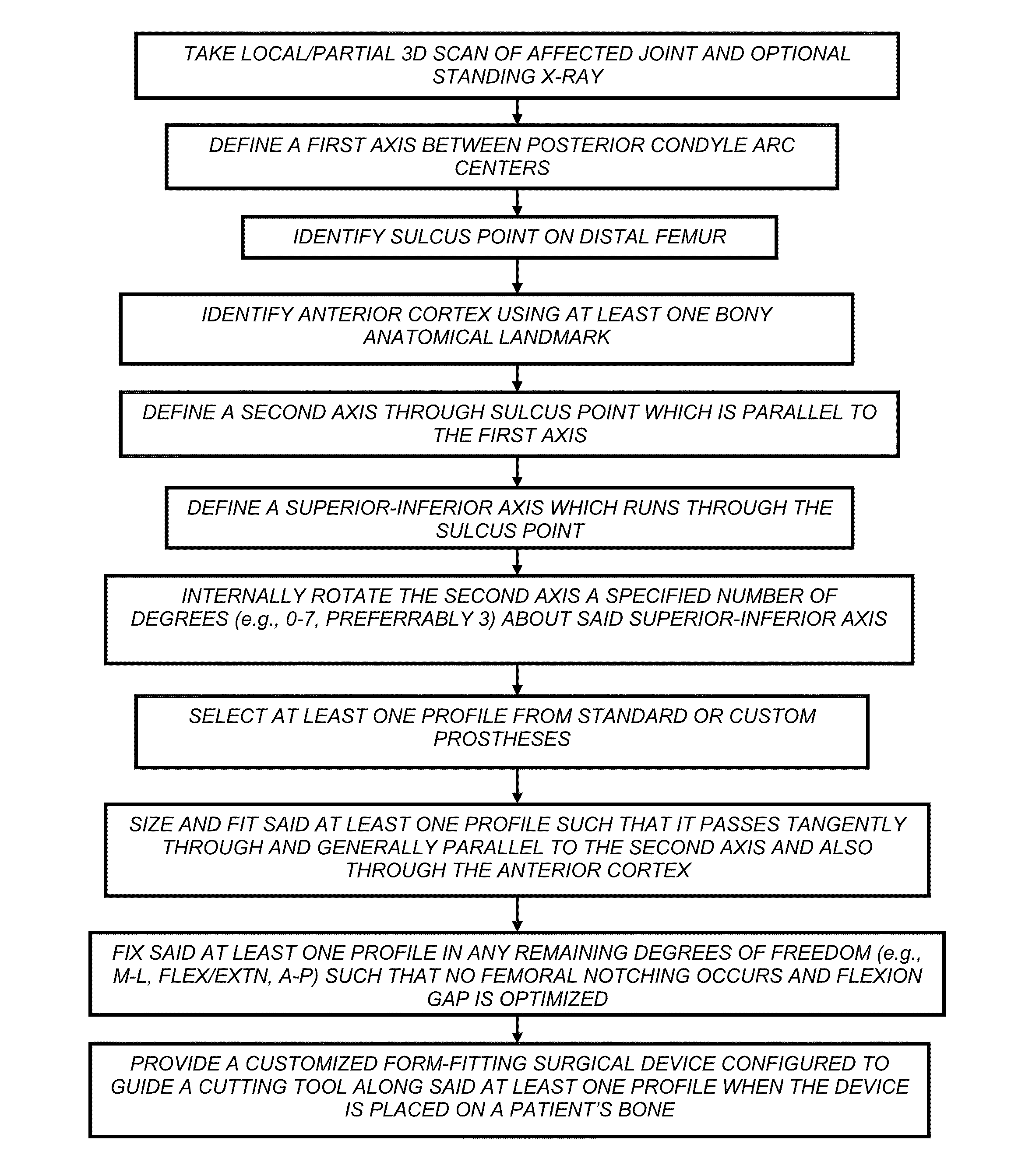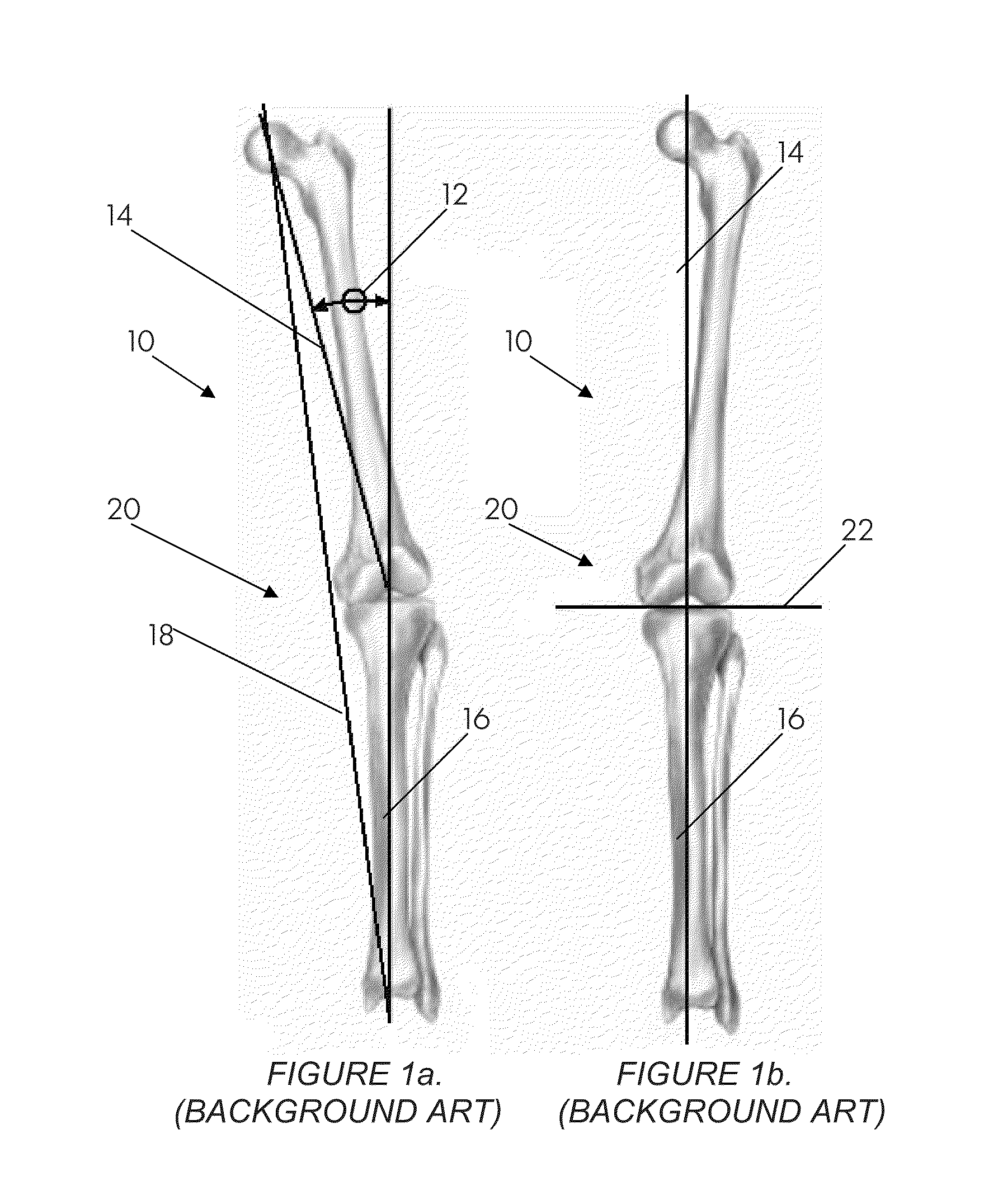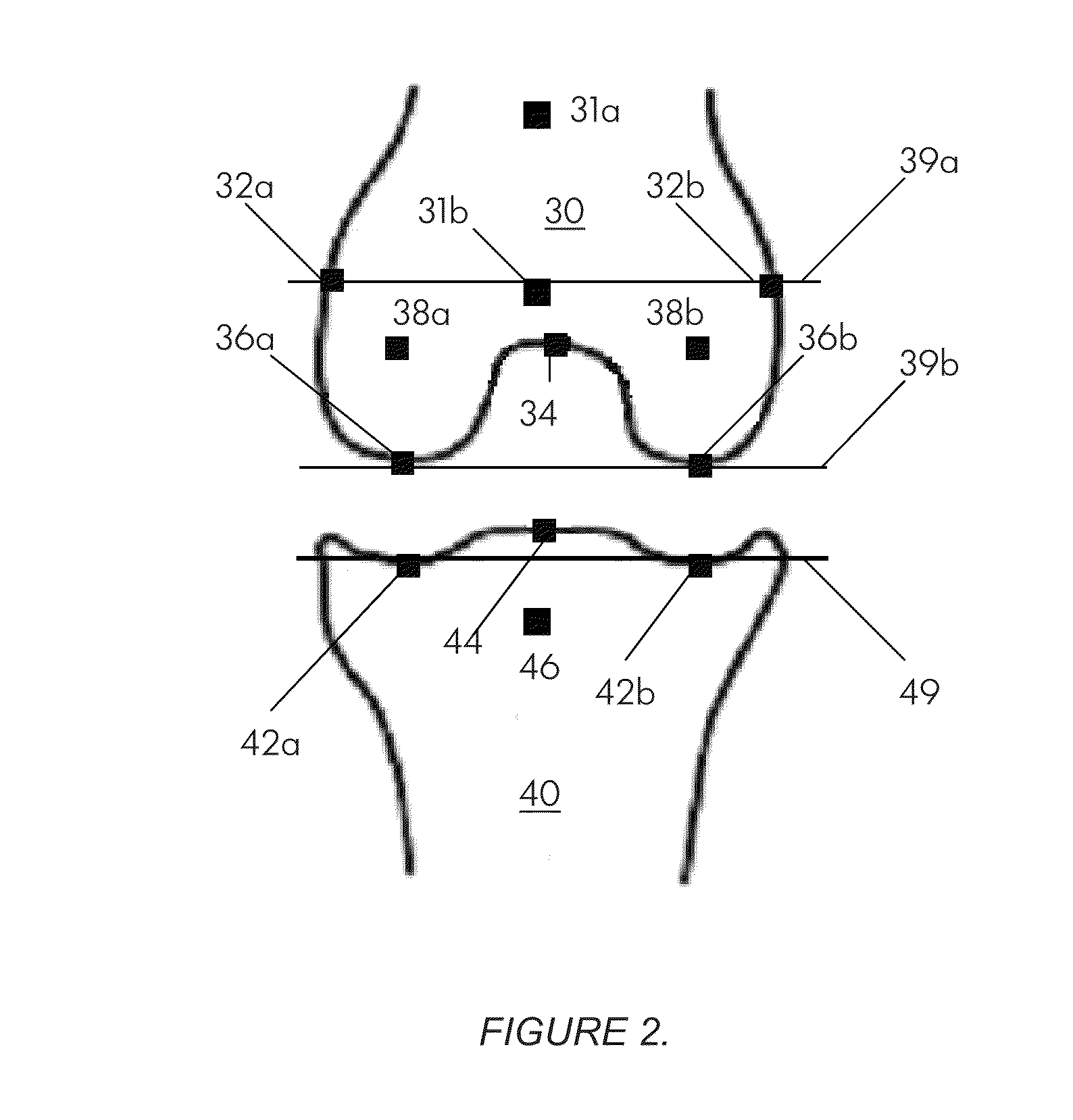Systems and methods for determining the mechanical axis of a femur
a technology of mechanical axis and femur, which is applied in the direction of prosthesis, instruments, applications, etc., can solve the problems of not being able to achieve the same performance for all patients, the current method of manufacturing custom implants is generally expensive, and the patient may have abnormally small or large bone structures. achieve the effect of optimizing the performance for a particular individual
- Summary
- Abstract
- Description
- Claims
- Application Information
AI Technical Summary
Benefits of technology
Problems solved by technology
Method used
Image
Examples
Embodiment Construction
[0060]Stresses within the knee joint are generally uniform and well balanced when the mechanical axis passes through the center of the knee joint. However, in many knee joint diseases, the mechanical axis is disturbed and does not pass through the center of the joint. Such a disturbance overloads portions of the knee joint, eventually leading to damage of even healthy tissue and cartilage. For example, if one condyle experiences degradation, the patella may not track symmetrically within the patellar groove on the femur. This may adversely affect Q-angle and cause anterior knee pain. A patient may compensate for a malaligned mechanical axis by modifying or adjusting their gait pattern to reduce knee pain. However, doing so may lead to other long-term problems such as hip, ankle, or back pain.
[0061]Thus, it is typically the task of a surgeon to restore the mechanical axis of the knee joint during a total or partial replacement surgery, such that that the mechanical axis will be resto...
PUM
 Login to View More
Login to View More Abstract
Description
Claims
Application Information
 Login to View More
Login to View More - R&D
- Intellectual Property
- Life Sciences
- Materials
- Tech Scout
- Unparalleled Data Quality
- Higher Quality Content
- 60% Fewer Hallucinations
Browse by: Latest US Patents, China's latest patents, Technical Efficacy Thesaurus, Application Domain, Technology Topic, Popular Technical Reports.
© 2025 PatSnap. All rights reserved.Legal|Privacy policy|Modern Slavery Act Transparency Statement|Sitemap|About US| Contact US: help@patsnap.com



